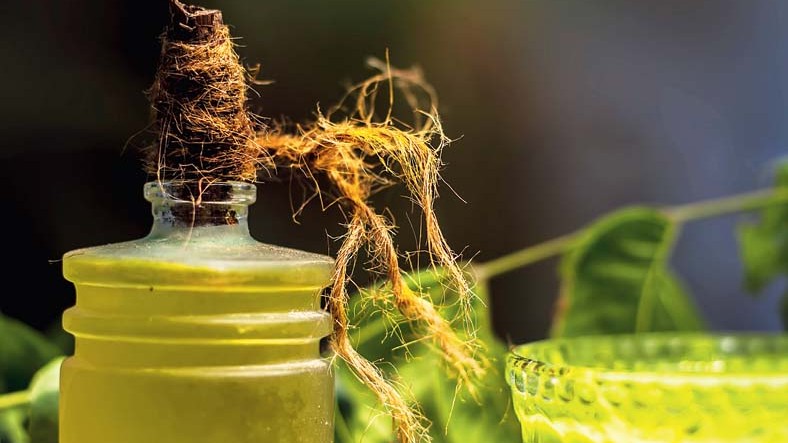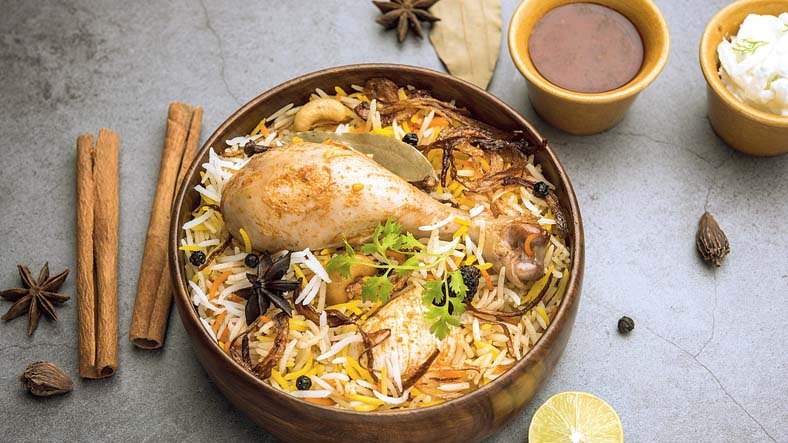I have a packet of quinoa and the person who gave it to me said that she cooks it with rice. I wanted to know more about it… whether it has an Indian name and can it be used as a breakfast cereal with milk or in payasam? Or, in the place of semolina in halwa? I know that it can be used in salads but should it be raw or cooked? I am 82-plus, please suggest some simple recipes in your column.
SEE! Interest and excitement about food, ingredients and cooking has absolutely no age limit. I am so pleased that you’re interested to find out and I am going to say yes to everything and all the above. Although, I am sure the Peruvians would probably have something to say about that.
I wasn’t particularly fond of quinoa when I first started using it but over the years, it has grown on me and I cook it at home from time to time. It’s actually a seed and unlike rice, is full of protein and fibre and has little carbohydrates. So great for diabetics and although it doesn’t cook the same as rice, it could make for a replacement.
Now, I don’t particularly like it when it’s just simply boiled but that’s how they eat it most of the time in South America. It’s nice though if you make more of a salad out of it with some finely chopped onion, tomato, cucumber, green chilli, chopped coriander, squeeze or lemon, olive oil, salt and pepper etc but I personally like it best if you make more of a khichri out of it. Cooked long and slow and it works well in a payasam or firni, cooked the exact same way as you would normally cook it. Just play around with it. It may surprise you.

I want to start experimenting with different oils for cooking. Can you tell me some easily available ones that are healthy and what can I use them for? What are some dos and don’ts?
What’s wrong with butter and ghee? Both looked upon to be possibly better for you these days than any of the oils but of course, everything in moderation.
The rule of thumb with oil is to try to steer well clear of refined vegetable oils as they are low on nutrients. Most individual seed oils are good for you though... all the traditional ones that have been used in India for eons. Mustard, coconut, palm, peanut, sesame, then onto sunflower, olive oil etc. All of these are great to cook with.
Beyond these, oils that you only really use to dress ingredients and lose all of their incredible nutrients when heated. These are the virgins. All taken from the first cold pressing. You can find these in all of the above. I buy virgin mustard, coconut and olive oils for home and thereafter, for their nutrients and incredible variety in flavour. You have avocado, walnut, hazelnut, pumpkin seed etc.
I am a beginner in cooking. I try simple recipes now. Can you tell me what are some basic equipment that can help me in the cooking process?
The only basic equipment, any good cook will ever need is a heat source, a few good pots and pans, a good sharp knife, a peeler, cutting board and the rest of the equipment is all in your head — a great sense of taste, smell, flavour and of course, sense of organisation. Beyond that, the rest you can pick up as you go along but most importantly. Cook, cook, cook, fail, cook, cook, fail etc and keep learning from your mistakes. Happy cooking!
What to do with leftovers? Typically a little bit of this and a little bit of that.
Heat them and eat them! Never waste them!
Doctor has asked me to consume 20ml oil daily. No dairy products and small fish only. Six small meals a day, with loads of fibre-rich food. I am usually the pork crunching , fish chewing, die-hard foodie. I need to make all this in a home kitchen with Bengali ingredients. Please help me out.
Mmmmm, interesting! And all about going right back to basics and for most of it, exactly how I cook at home. Not sure about the small fish though and why they turn up here?!
So lots of dals, chickpeas, kidney beans, cooked simply with as many flavours and spices as you like. Kachumber and any other favourite salad all day long. Interesting rotis made with atta, ragi, millet etc. Soups — chunky or pureed, filled with vegetables and grains. Maybe try cooking with quinoa that I have mentioned in a previous answer. Full of fibre and nutritious. You can also easily steam your fish as you would paturi/patrani — as the Chinese do with loads of shredded vegetables, ginger and fresh coriander with a dressing or light soya sauce and a scant drizzle of toasted sesame oil.
I absolutely adore pan-grilled vegetables. Heat a non-stick fry pan or preferably tawa, until scorchingly hot. Place pretty much any of your favourite vegetables. No need for any oil. Just grill them on both sides until they still have some texture and make a simple dressing with a little extra virgin olive oil, chopped garlic, a squeeze of lemon, any spice or masala of choice etc. There should be plenty there to keep you busy.

Chef can you please give an easy recipe to cook biryani for people living abroad?
Not easy necessarily but this is how I always make it under enormous family pressure when I am in the UK.
To begin with, place the pieces of lamb (neck or shoulder meat)/chicken thighs (1kg) into a large saucepan or pressure cooker. To this, add Greek yoghurt (150g), two peeled and sliced onions and a bulb of peeled and chopped garlic that have been browned in butter or ghee (50g). Also add two cinnamon sticks, 12 crushed green cardamom pods, four black cardamom pods, two pieces of mace, cumin seeds (1tsp), a little chilli powder, water (250ml) and six to eight peeled and halved medium potatoes. Make sure that you first fry the potatoes a little to give some colour and stop it from breaking apart later.
Slowly cook for a good hour-and-a-half or 30 minutes in a pressure cooker on low, after the first whistle. Next, soak 400g of good quality Basmati rice in fresh cold water for 30 minutes and drain. Then cook in four to five times the amount of fresh salted water, with two bay leaves, 12 green cardamoms, two pieces of mace and three whole black cardamons and half a cinnamon stick, until 75 per cent is done. Then strain and set aside.
When the meat is tender, strain the juices into a bowl and preheat your oven to 160°C. Smear butter or ghee (50g) inside a large casserole dish. Place the meat and potatoes at the bottom with around a few pitted dates and the cooking juices. Sprinkle over the rice with the juice of half a lime, a light sprinkling of rose water, a couple of tbsp of melted ghee drizzled, covered in foil and baked for 45 to 50 minutes.

I have been following your most interesting and useful write-ups for many years. Your sourdough series is great. I have been baking my own bread here in Calcutta for the last about 59 years.
I was fascinated, watching MasterChef Australia, how they just simply flung together flour and diced butter into a rectangle, kept it in the fridge, rolled it out, that same as flaky pastry. In the absence of details how they actually started and got everything together into that rectangle pastry slab I am still at a loss to understand! How can this flaky pastry dough be created like sort of magic?
Such a great question and one that takes me right back to my college days. The recipe I think you are talking about is for a rough puff pastry or as we called it in college, puff pastry using the Scotch method.
Rough puff pastry
Sift strong plain flour (250g) and salt (1tsp) into a large bowl. The add to it very cold butter (250g) cut into one- inch dice and toss the flour and butter together. Before making a well in the centre and pouring in roughly 125ml ice cold water and mixing until you have a firm rough dough with the butter cubes almost intact, adding extra water if needed. Flatten slightly into roughly an eight-inch square or rectangle, cover with cling film before allowing to rest in the refrigerator for 20 minutes.
Next, place a lightly floured work surface and roll the dough into roughly 10-inch x 14-inch, fold the top third down to the centre, then the bottom third up and over. Repeat three more times, wrap with cling film and refrigerate again for another 20 minutes before it is ready to use as you would with any puff pastry.
Have a question for Shaun? Ask t2@abp.in or shaunchef@yahoo.co.u
